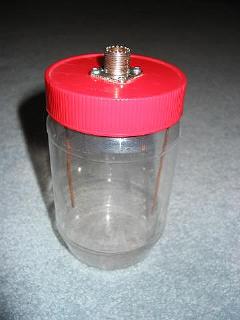Function:
An inductor stores energy in a magnetic field. An example is the coil in an automobile sparkplug distribution or coil on plug technology. When the magnetic field collapses in the coil, it liberates its energy. That's how the spark is made. Inductors can also be used as frequency filters
Symbol for Inductor
Symbol for Inductor in a circuit
In a circuit diagram, an inductor is shown like this:
To understand how an inductor can work in a circuit, this figure is helpful:
What you see here is a
battery, a
light bulb, a coil of wire around a piece of
iron (yellow) and a switch. The coil of wire is an
inductor. If you have read
How Electromagnets Work, you might recognize that the inductor is an electromagnet.
If you were to take the inductor out of this circuit, what you would have is a normal flashlight. You close the switch and the bulb lights up. With the inductor in the circuit as shown, the behavior is completely different.
The light bulb is a
resistor (the resistance creates heat to make the filament in the bulb glow -- see
How Light Bulbs Work for details). The wire in the coil has much lower resistance (it's just wire), so what you would expect when you turn on the switch is for the bulb to glow very dimly. Most of the current should follow the low-resistance path through the loop. What happens instead is that when you close the switch, the bulb burns brightly and then gets dimmer. When you open the switch, the bulb burns very brightly and then quickly goes out.
The reason for this strange behavior is the inductor. When current first starts flowing in the coil, the coil wants to build up a magnetic field. While the field is building, the coil inhibits the flow of current. Once the field is built, current can flow normally through the wire. When the switch gets opened, the magnetic field around the coil keeps current flowing in the coil until the field collapses. This current keeps the bulb lit for a period of time even though the switch is open. In other words, an inductor can store energy in its magnetic field, and an inductor tends to resist any change in the amount of current flowing through it.


